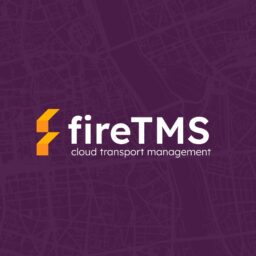Do you want to increase the cost-efficiency of your orders and reduce empty trips? Use the new fireTMS truckMatching feature. It allows you to plan your transport in an effective and profitable manner. Read the article below and check out how to use the tool in practise.
This article covers:
What is fireTMS truckMatching?
fireTMS truckMatching is a feature of the system to:
- quickly simulate a route for a new sub-load
- verify the increase in your commission if the selected order has been taken
- search for an appropriate vehicle that is going to complete a different order near the subsequent loading site
The tool helps effectively organise transportation and finally increase its profitability. Within a single carriage, a vehicle can complete several orders and, thus, increase profit. Key benefits of fireTMS truckMatching:
- effective transport planning by indicating the best vehicles for given loads
- enhancing order cost-efficiency by maximising the use of cargo space
- enhancing the profitability of full truckload services
- reducing empty running
How to use fireTMS truckMatching?
To use fireTMS truckMatching, go to Vehicles >> Find of partial load, fill in loading and unloading dates and locations, and click Search.
You can add any number of loading and unloading operations to the search engine and specify the search range in kilometres (the radius of a circle for each entered site). You can also determine the sub-load price and on this basis calculate Commission and Commission increase.

In the last section, you can select the required fleet characteristics and whether the search engine should consider Internal vehicles or External vehicles.
Important: in order for commission to accumulate for every added load, for this purpose, Price per km has to be provided for an Internal vehicle. To do this, go to the Carrier view, Vehicles >> Vehicles, click Edit for the selected vehicle, and fill in Price per km.
For an External vehicle, check if Rate per km (loaded) is specified. To do so, go to the Forwarder view, Vehicles >> Vehicles, and click Edit for the selected vehicle. If this rate is not completed, it should be checked that it has been defined for the external carrier (Files >> Carriers). If Rate per km (loaded) is not defined, you can estimate the commission based on Rate per km (export), Rate per km (import) and Rate per km (empty). Note that the vehicle’s commission always has higher priority than the carrier’s default commission.
Fast vehicle search for sub-loads
When searching for a vehicle for a sub-load, the system initially checks the following options:
- Internal and external order to which a vehicle is assigned. This is a prerequisite, as orders in progress without vehicles assigned are not taken into account.
- Available vehicles that can be used on the day of first loading. Important: an Available vehicle can be displayed in the search engine, provided that it is not reserved.
- Near vehicles (GPS).
Adding sub-loads to orders
For orders, a load is added to the existing order. For vehicles identified on the basis of their expected location (Available vehicles), you can add a new load by creating a new order or adding to the existing order. You can also reserve Available vehicles.
Important: if the fireTMS user has automatic load cancellation enabled, it has to confirm the new load.
Advanced fireTMS truckMatching functions
The search engine for vehicles for sub-loads has extra functionalities to additionally streamline the organisation of transportation. Advanced setup includes:
- Allow sub-loading to orders – with this option, an order is included in the search engine. By default, this option is enabled.
- Verify the minimum commission when blocking vehicle top-up – with this option, you can block the permission for sub-load if the minimum order commission has not been met.
- Availability schedule – with this option, you can set availability dates for External vehicles. After the set date, vehicles are no longer displayed in the search engine. By default, this option is enabled.
- Automatic cancellation of loads – with this option, you can automatically cancel non-confirmed loads and specify the time after which the cancellation is to be initiated. By default, this option is disabled.
- Requirement to add a document prior to load confirmation – with this option, you can block the possibility of confirming a sub-load without an assigned document.

The fireTMS truckMatching feature is available in the Enterprise plan. Don’t wait any longer – contact us and learn more!
Informacje od fireTMS są cenne jak ładunek
Regularnie dostarczamy informacji o naszym systemie oraz na tematy z branży TSL.
Zapisz się do newslettera i bądź na bieżąco.

fireTMS team
The article was written by the fireTMS team, based on their knowledge, experience and awareness of the TSL industry.
